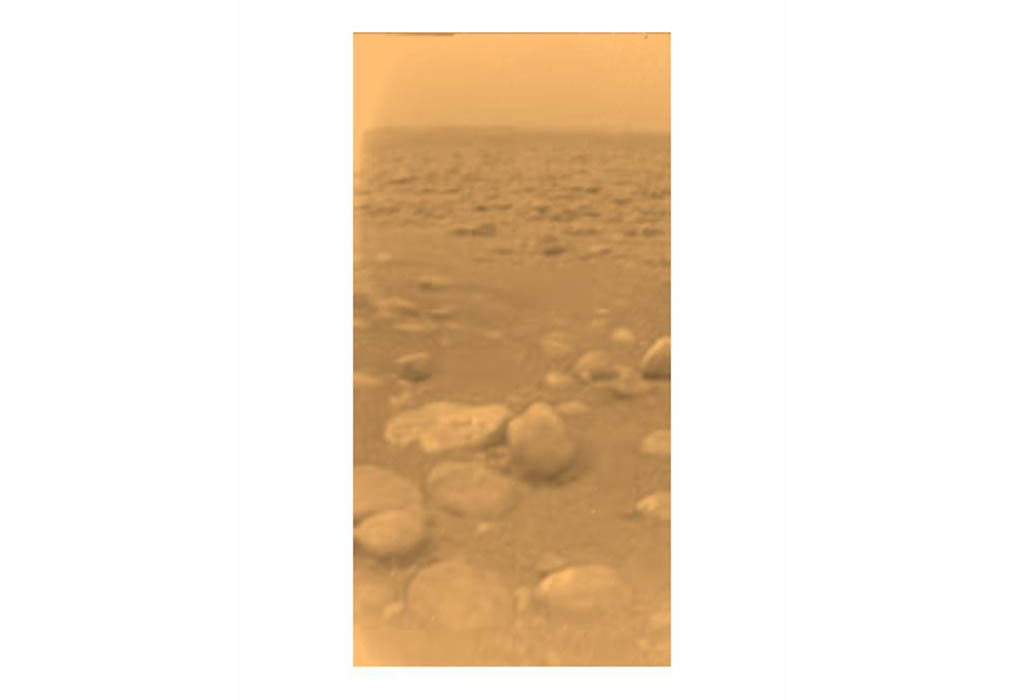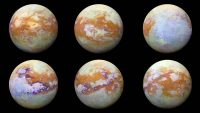This image was returned January 14, 2005 by the European Space Agency’s Huygens probe during its successful descent to Titan’s surface. This is the colored view that’s been processed to add reflection spectra data to give better indication of the actual color of Titan’s surface. (NASA/JPL/ESA/University of Arizona)
Home This image was returned January 14, 2005 by the European Space Agency’s Huygens probe during its successful descent to Titan’s surface. This is the colored view that’s been processed to add reflection spectra data to give better indication of the actual color of Titan’s surface. (NASA/JPL/ESA/University of Arizona) This image was returned January 14, 2005 by the European Space Agency's Huygens probe during its successful descent to Titan's surface. This is the colored view that's been processed to add reflection spectra data to give better indication of the actual color of Titan's surface. (NASA/JPL/ESA/University of Arizona)
This image was returned January 14, 2005 by the European Space Agency’s Huygens probe during its successful descent to Titan’s surface. This is the colored view that’s been processed to add reflection spectra data to give better indication of the actual color of Titan’s surface. (NASA/JPL/ESA/University of Arizona)




